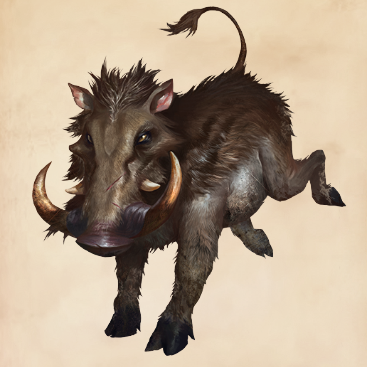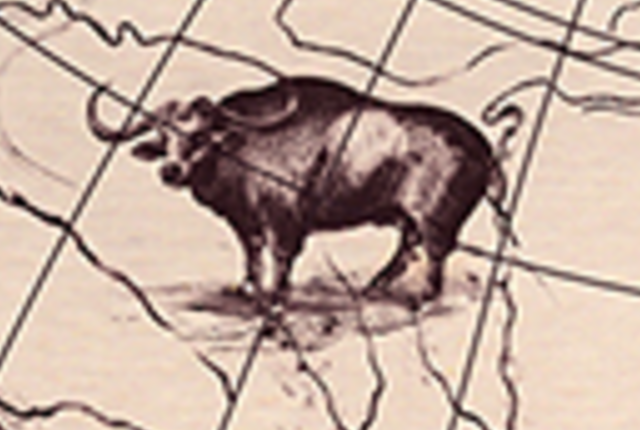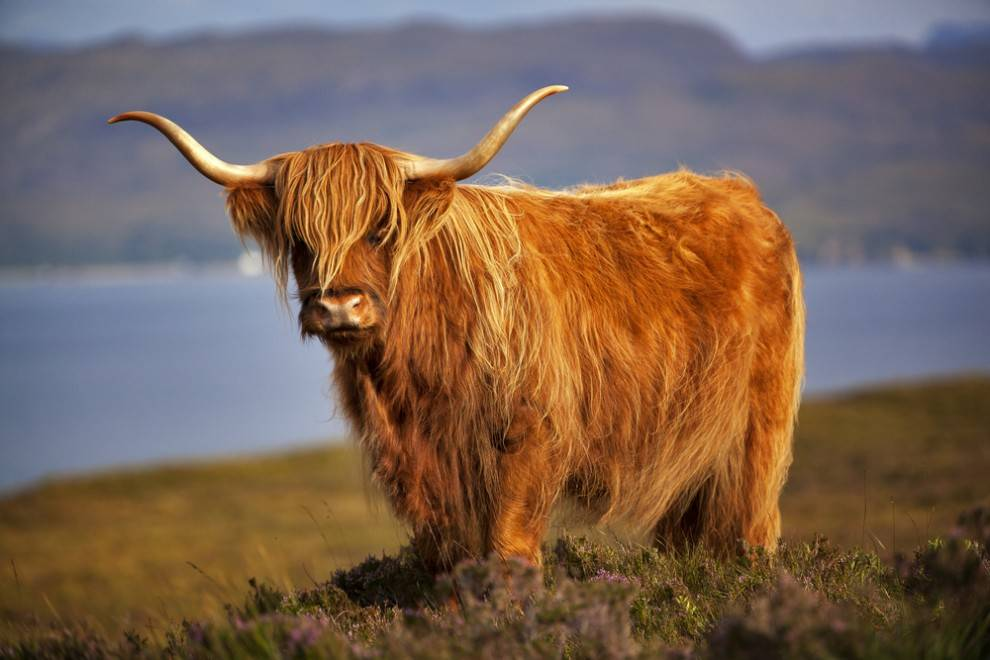Announcements
Welcome to Care of Magical Creatures 601!
I'd like to give you a warm welcome to the Care of Magical Creatures classroom! If you have any questions about the class, please feel free to reach out to Professor Montclam by owl or visit her newly refurbished office!
Note: During the transfer period of professors, you may find some inconsistencies among the lessons. I appreciate your cooperation during this time!
Lesson 5) Olly Olly Oxen Free The Warthogs
Welcome back to class, everyone. Today I will be leading our lesson, and Professor Anne will be administering your midterm exam afterwards. We will be covering two magical creatures in this lesson before we go on to take the midterms. This lesson won’t be as long as others have been in the past, but the information I share with you today is still very important and will be featured on your upcoming exams. Therefore, I highly encourage you all to pay close attention. Let’s go ahead and begin, shall we?
The Tebo and The Re’em
To start with, let’s look at these creatures side by side. They certainly have their similarities, but they are two very different animals. Just from the pictures, you can see they both have horns or tusks of some sort, hooves, bell-shaped ears, and long tails with a tuft of hair at the end. The creature on the left is called the Tebo, and the creature next to it is called a re’em. They are both equally fascinating, due to their characteristics and relation to the Muggle world, and they are what we will be exploring in our lesson today.


Appearance and Characteristics
Both the Tebo and re’em are classified as beasts by the Ministry of Magic, and each also has a rating of XXXX. This rating was given to them because of their special abilities, rarity, and the difficulty involved in catching them. As for their locations, they will be found in different areas of the world. The Tebo is only located in Africa; more specifically, it is found in the countries of Congo and Democratic Republic of the Congo. The re’em, however, has a bit more widespread native range. It is located in the North American wilderness, and also in the Far East.
You might not believe it, but these two creatures get mixed up quite often. In our lesson today we are going to not only take a look as to why that is, but I will also make sure that we clear the air on any confusion. We will closely study the differences in these magical animals as well. As you can see in the photos I have provided you, these two creatures look quite similar to mundane creatures. For example, Tebos resemble a warthog. As for the re’em, one could easily compare it to a mundane ox, or a longhorn or highland cow. However, there are some obvious differences from their mundane look-alikes that we should study.
First, we’ll look at the Tebo. This creature has the body of your average warthog but the coat is a much ashier, grey color. While the photo I have provided above is more brownish, it still has an ashy hue. Tebos can also be solid grey. I have provided a picture of a mundane warthog below. Notice that the faces are very similar, but where the Tebo’s smaller set of tusks is present, there is more of a skin growth on its mundane counterpart. The Tebo also is much hairier. While the warthog pictured below also appears to have ash-colored skin, it is important to note that the Tebo’s skin has an almost translucent quality due to its special ability: invisibility. Tebos have the ability to make themselves disappear at will. This makes it incredibly difficult to locate a Tebo.
Onto the next! Re’ems may look like an ox or longhorn cow, but you’ll notice that they are much larger in size, and its hide is of a golden color. Some highland or longhorn cattle can have golden coats, but the horns are different. Below is a picture of a highland cow. Notice that while the color is similar to that of a re’em, the horn shape is distinctively different. Rather than the tips going inward towards the body, the cow below has the tips of their horns facing outward, away from the body. Also provided below is a picture of oxen. Notice that the tips of these horns are pointing straight up, rather than away from or towards the body. Additionally, a re’em is typically 50%-75% larger than mundane oxen or cattle.


Highland cow on the left; pair of oxen on the right
Now, re’ems are very rare and difficult to find, giving it another similarity to Tebos. Both of these creatures are considered rather strong and dangerous, but the rarity and riskiness that comes along with them is what gives them their XXXX classification. With re’ems scarcely found, and Tebos disappearing left and right, I would imagine magizoologists find studying them rather difficult. The re’em is thought to be more of a docile creature, but with so few, magizoologists can’t know for sure. It is possible that the ones they studied were the pets of a wizarding town, or maybe they just liked the berries that the magizoologists were offering. Until there are population increases, or more data is collected, we won’t know for sure.
Diet
This section is where we start to see more differences and similarities between these two creatures. Since re’ems are very rare and hard to find, magizoologists have only a general understanding of them and their habits. The Tebo and the re’em will eat almost exactly the same things, but there is an exception. The diet of re’ems consists of grass, berries, fruit, flowers, moss, and roots, as they are herbivores and this is what they can find in their ecosystems. The diet of Tebos is exactly the same, except that they are omnivores, consuming some meat alongside the vegetation. They will prey on insects, small mammals, and birds.

Synsepalum dulcificum, a berry from West Africa
Reproduction
Let’s move on. We will begin discussing reproduction with Tebos. Tebos live in small groups that consist of a mother and her young. These groups are called sounders. Any male Tebos, or boars, will live alone until the mating season rolls around. Tebos have a mating season that begins when the rainy season is over. In Africa that would be towards the end of April. When a boar is interested in mating with a particular female (we call them sows), he will grunt at her until she accepts. When a female Tebo, or sow, becomes pregnant, she will carry her young for six months, and she will have four offspring. Baby Tebos are called piglets. She will always have four offspring because she has four teats. Each piglet exclusively uses a single teat; they are not interchangeable, even if one of the offspring dies. Piglets will drink their mother’s milk for about four months, however, once they become just two months of age, they will also add grass to their diets. These piglets will stay with their mother until she has another litter, then they will go their own way to start new sounders. They usually live about 20 years, but the oldest known Tebo was 27. These beasts can reach up to six feet (1.8 meters) in length, and weigh up to 260 pounds (117.9 kg).
Since re’ems are very rare, they are much harder to study. The data on how these mysterious creatures reproduce is not available, though some magizoologists believe that their reproduction works in a way that is similar to mundane bovine creatures, with a gestation ranging from nine to eleven months and the chance of twins occurring is unlikely. Repeated expeditions to known sighting areas have caused individuals to see re’ems that look “skinny and skeleton-like,” causing magizoologists to believe that these might have been older re’ems. The average lifespan for mundane cattle is 17-25 years, and it is likely that this is mirrored or closely mirrored in re’ems.
Uses in the Wizarding World
As one probably could have guessed, these two magical creatures both have very magical purposes. The re’em’s blood can be used in certain potions that will grant whoever drinks it a great amount of strength. However, it is highly recommended that humans (even those of magical descent) do not drink the blood on its own, as without it being brewed into a potion the side effects can be permanently damaging to your health. Centaurs have been known to drink the blood on its own and be perfectly fine, but their biology is different from ours. There is another small catch. The blood is very rarely found since re’ems are so rare themselves. You’d have to do a massive amount of searching for it, and be able to cough up a large sum of money in order to obtain it. The demand is larger than the supply, so don’t expect to be able to find any within your price range. It is even considered a Class C Non-Tradeable Material in some societies.
As for Tebos, their hide itself is very tough. Because they are not as rare as re’ems, their hide is much easier to come by. This hide can be used by witches and wizards to make protective armor and shields. Some creatures like to use the hide for this as well. Witches and wizards have more recently been known to use the hide to make gloves for herbologists and the like. Their hair was once used to make Invisibility Cloaks, however, it was nowhere near as effective as Demiguise hair. It is rare to find a cloak made with their hair, but should you find one it is fairly easy to identify: the hair is incredibly rough and coarse.
A Brief History
Now that we have learned about them, I wanted to touch briefly on the supposed history of the creatures. Sightings of the Tebo date back to the early 1800s, when different British and French settlers noticed disappearing pigs in southern Africa. In the wizarding community, these reports crossed the Atlantic Ocean to Europe, but they were not taken seriously until the late 1800s when more and more reports surfaced. Eventually, magical photographic evidence of the creature disappearing and reappearing was produced, and more investigation into the Tebo’s existence occurred. Generally, the Department for the Regulation and Control of Magical Creatures disregarded these creatures until the 1950s. They were seen as insignificant to some because they can rarely be trained and are of little use to us when we can’t see them. But, for a short while, poaching became an issue as people wanted the skins to make protective clothing. This caused the DRCMC to become more involved in the protection of the Tebo and reprimand poachers. There is now an active task force in Africa to further prevent the poaching of them.
The re’em has more of a complicated tapestry. Diary entries and letters from British settlers often mention a golden ox that was seen through the trees in the dead of night. To them, it appeared to be glowing, that’s how golden it was. It was new, and thus the news spread. Magical authorities eventually caught wind of it, and attempted to determine more about the creature. However, when they arrived in New England, they couldn’t find the creature that had been whispered about. Several more expeditions produced sightings, but they were few and fleeting. After the Ministry of Magic released a report discussing the sightings, and asking anyone who had also seen the creature to come forward, reports began pouring in from the Far East. This prompted the Department to make many trips to the area, collecting reports and evidence. Eventually, it was determined that this creature was identical to the one seen in New England. The DRCMC has continued to go to both areas in search of specimens and clues, but only one carcass has been found. Perhaps their bodies are consumed by wild animals in their area. Using the found specimen, the size of the re’em was determined, though more samples are needed to gain a true mean or average.
Helminths in Tebos
Like many different species of African warthog, Tebos experience different parasitic invasions. One of the most common is helminths, which are commonly called intestinal worms. These parasites take nutrients away from the host, causing the host to lose much of their body weight. Lethargy is the most important symptom to take note of with internal parasite invasions. Another obvious symptom is if you see the worm coming out of the creature’s rear end. This is common when the worms get too long to stay wrapped in the intestines anymore, or they get caught on some fecal matter coming out.
There are some fairly simple ways to treat this type of parasite. While we are discussing it in terms of the Tebo, internal worms are something the majority of creatures can contract. They could consume eggs in the vegetation they eat or they could contract it from other infected creatures. It is something to always be on the lookout for. Because it’s so common, creature shops will carry special potions and medications you can use. These will kill the worms, and then they will come out with the feces. You can even go to Muggle animal stores and purchase their products, as they work identically to the products sold in our stores, though they will not be nearly as effective.
Closing Remarks
And that should do it for today’s lesson, everyone. I hope you all enjoyed and found these two magical beasts as interesting as I did! I now ask you all to direct your attention to our very own Professor Anne, who will be leading your midterm exams. I wish you the very best of luck today, and on your exams in your other classes. I know you will all do excellent as usual! I will see you all again after the break.
All pictures are found using the Google Images search engine, and belong to their owners.
We will be building off of your prior knowledge of these creatures from popular culture, and helping you understand why they are seen in both worlds. Some of these creatures are considered cryptids or mythological in the Muggle world, whereas others have Muggle counterparts.
- COMC-OWL
Enroll


